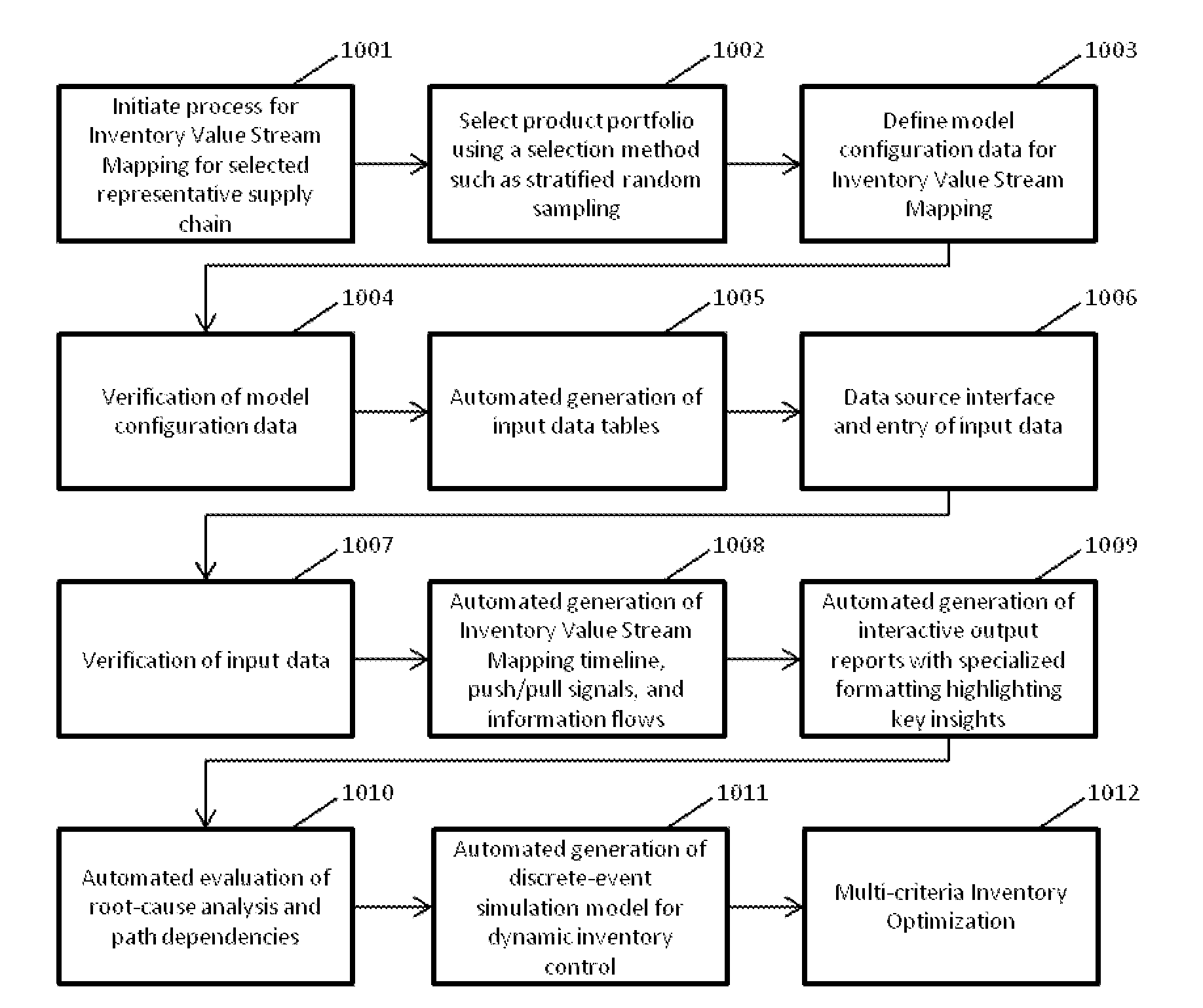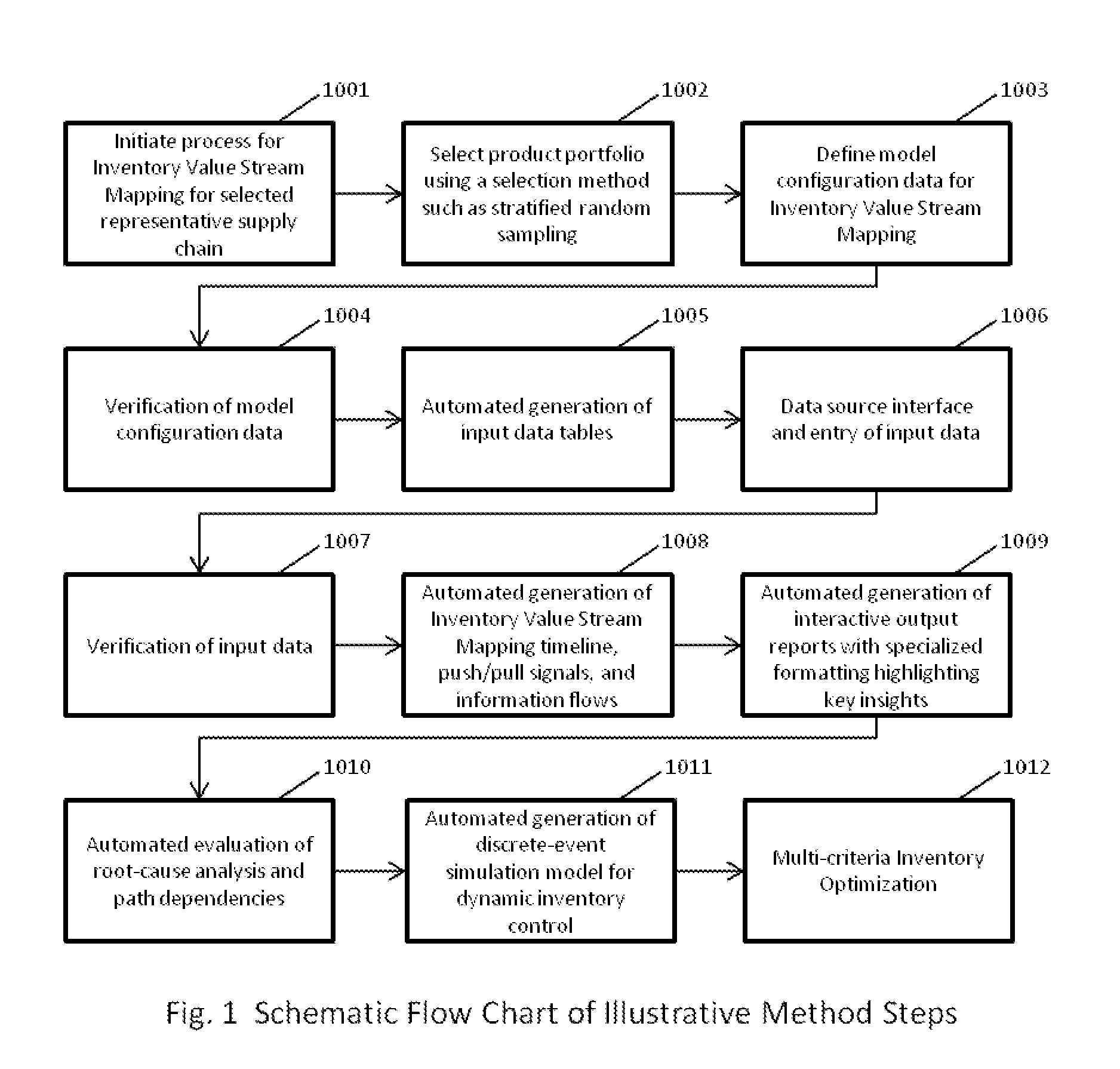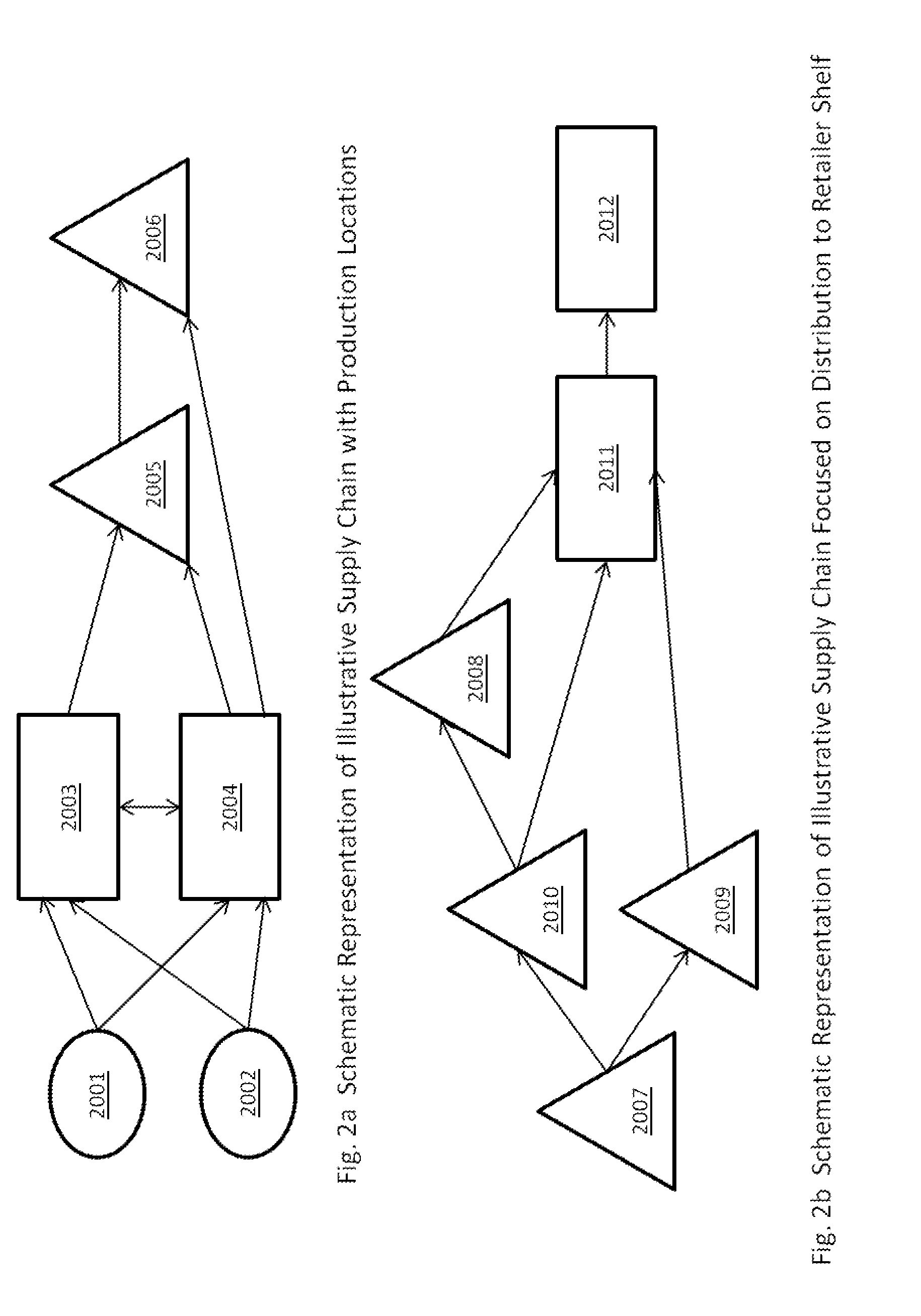Supply Chain Analysis
a supply chain and analysis technology, applied in forecasting, instruments, data processing applications, etc., can solve the problems of different handling requirements, difficult identification, complex problem of analyzing a supply chain using vsm, etc., to achieve efficient analysis of the dynamic control of inventory, reduce the effect of data inpu
- Summary
- Abstract
- Description
- Claims
- Application Information
AI Technical Summary
Benefits of technology
Problems solved by technology
Method used
Image
Examples
Embodiment Construction
[0052]Aspects and embodiments of the invention are described in further detail below by way of example and with reference to the enclosed drawings in which:
[0053]FIG. 1 is a schematic flow chart of illustrative method steps;
[0054]FIGS. 2a and 2b are schematic representations of illustrative supply chains;
[0055]FIG. 3 is a table containing definitions of a selected subset of a product portfolio for an exemplary supply chain;
[0056]FIG. 4 is a table containing definitions of locations for the exemplary supply chain;
[0057]FIGS. 5a and 5b are tables containing definitions of supply routes between each of the locations in the exemplary supply chain, FIG. 5b is a similar table, but with units of measure;
[0058]FIG. 6 is a schematic representation of the exemplary supply chain;
[0059]FIG. 7 shows various tables containing input data relating to movement timing and order cycle times for the exemplary supply chain;
[0060]FIGS. 8a and 8b show tables containing input data relating to inventory ove...
PUM
 Login to View More
Login to View More Abstract
Description
Claims
Application Information
 Login to View More
Login to View More - R&D
- Intellectual Property
- Life Sciences
- Materials
- Tech Scout
- Unparalleled Data Quality
- Higher Quality Content
- 60% Fewer Hallucinations
Browse by: Latest US Patents, China's latest patents, Technical Efficacy Thesaurus, Application Domain, Technology Topic, Popular Technical Reports.
© 2025 PatSnap. All rights reserved.Legal|Privacy policy|Modern Slavery Act Transparency Statement|Sitemap|About US| Contact US: help@patsnap.com



